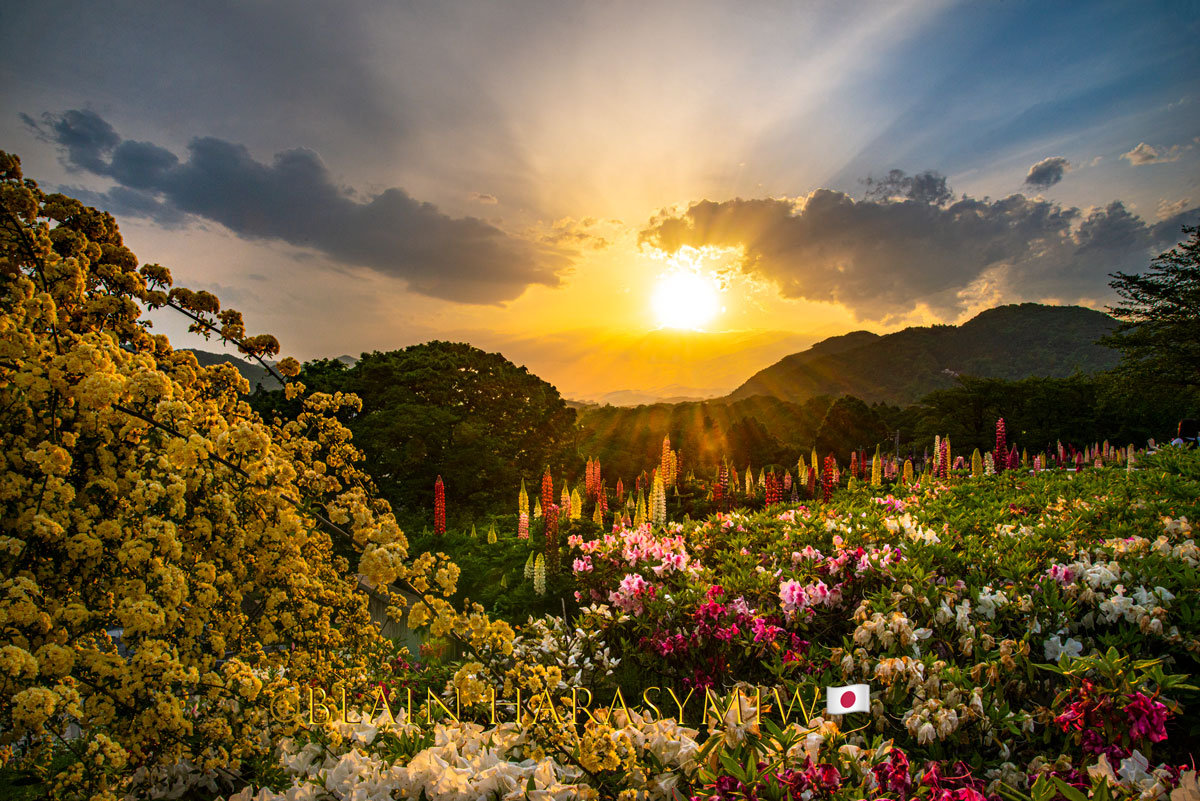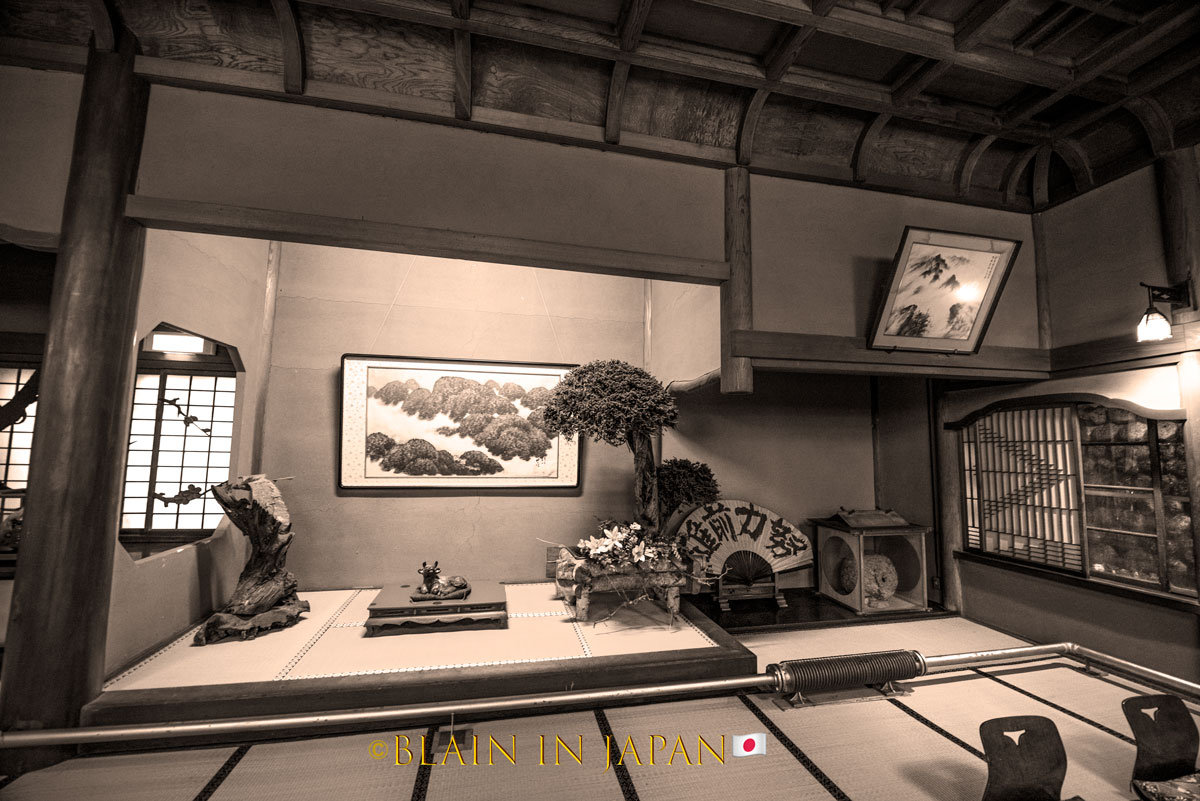Before I give you inside info about what a blissful Authentic Japan Cherry Blossom Photo Tour is, let me start with a ‘wake up call’ and explain what over 98% of visitors will experience when they descend on Japan to experience the Japan spring cherry blossom season. Millions upon millions of tourists flock to Japan in anticipation to discover the perfect cherry blossom and believe they are going to fully experience the untold hidden stories of Authentic Japan. This is the ‘wakeup call part’, the information researched by over 98% of visitors coming to Japan is filtered through search engines such as Bing, Yahoo, Google, and others. And each website people visit claims you will experience authentic Japan, WoW! I have been leading Japan photo tours for over 26 years, and as a local I have personally run into people with various aspirations about what authentic Japan should be, such as: chartered bus tourists possibly including bullet trains, tourists attempting to go it alone by vehicle or train, backpackers, and cross country cyclists, just to name a few of the visitors I’ve interacted with. Everyone of them were cool and fun to talk to, and I even gave rides to some of the backpackers and offered some advice about camping, and on a couple of occasions, these backpackers and cross country cyclists had no idea how costly camping in Japan could be. The average campsite is $50 per night for one person, and this price was beyond their means, so I gave them the low down on the how and where based on their itinerary (which I adjusted) they could camp across Japan and enjoy a safe, authentic Japanese backcountry experience. Some will say the essence of Japan can be found in one place with the right mindset. Well here is another wakeup call, that is wishful thinking! How could one find the essence of Japan when they are standing elbow to elbow with thousands of other tourists photographing a Zen Temple in Kyoto, then like cattle prodded by ‘insider information’, they all move as a herd to the next historical site together? And I joke you not all their insider information comes from tourist brochures or websites they all visited. WoW! Or even worse, I have seen people snapping pictures of pedestrians walking down the street and Maiko and Geisha in Kyoto or elsewhere in Japan. Why? On a side note, Kyoto has issued a new ordinance, that you cannot take pictures of Geisha or Maikos on the street or you will be fined if caught. WoW! Yup, it’s gotten that bad in Kyoto and other on the beaten paths spots across Japan. Imagine traveling halfway across the globe just to experience tourist pollution? Yup, all the run of the mill tourist companies want is to corral your money quickly and easily, not valuing you as a client, more as a commodity.
The three main problems with booking your vacation with a run of the mill tour company are accommodations, transportation, and meals. The majority of visitors studiously research hotels and feel a sense of victory after they have booked a hotel marked down from $500 to $250 for a couple per night. On a side note, many of Japan’s historical lodgings will not accept single occupants. And in some cases, when I’ve had single participants on my Japan photo workshops, I’ve had to have my booking agent reserve a double occupancy room and pay for it to sidestep this. When booking via Online Travel Marketplace (OTAs) websites, what the website are not filling you in on is that the price reduction is due to breakfasts, dinners and other amenities being subtly removed. Because of the implicit connection between hotels and common tour companies, clients are corralled on where to eat and which locations to visit at what times, to control the amount of tourist foot traffic in places such as Ueno Park, Sumida Park, Tokyo Sky Tree, The Imperial Gardens, Rikugien Gardens and elsewhere across Japan, especially during cherry blossom season. As for transportation, if you are unfamiliar with Tokyo or any other metropolitan hub in Japan, the most common result is throwing your hands in the air and praying for divine intervention, then hiring a taxi and paying through the nose, and if you are adventurous and off the beaten path you may end up sleeping the night on a park bench, I have seen it around the Fuji five lakes, not joking and in Japan there is no hitchhiking, people will not understand you sticking out your thumb. Mt. Fuji is not only a volcano but the most sacred mountain in Japan, and the nations most iconic symbol. The region around the fuji five lakes is a repository of some of the most amazing sakura in the country. I've talked with visitors in Mt. Fuji exiting a taxi with a Tokyo license plate, and the visitors seemed out of place and confused about what to do, so they introduced themselves to me, and after a brief conversation, I found out they paid $750 for their ride to Mt. Fuji. Lucky them, they could actually see Fujisan off the beaten path, away from tourist locations due to their taxi driver feeling sorry for them and being kind enough to take them to a decent place without tourists mulling about. But in most cases, they would have been dropped at Kawaguchiko Lake with no guidance, and picked up after a couple hours after, but don’t worry there are lots of places to shop for tourist trinkets in the area, if Mt. Fuji is clouded over. The more adventurous travelers catch a train to Kawaguchiko station from Tokyo (the fastest train is 3 hours one way - there is no bullet train to Mt. Fuji). Without accommodations, you'll spend a minimum of six hours or more on a train. Once you arrive at Lake Kawaguchiko train station, you’ll have to figure out how to get to Lake Kawaguchiko or one of the other Fuji Five Lakes. In peak season, you can spend upwards of an hour or more hiring a taxi or riding a local bus to get to an advantageous location to capture a decent view of Fujisan with hundreds of tourists queuing shoulder to shoulder. And once you’ve taken your ‘decent’ photos of Mt. Fuji, you return to your accommodation, and hopefully the next day is better. On a side note, if you are reading this, and don’t wish to travel with me, or I am busy and your honest, I will give you the low down on where to stay and what to so in the region. I give advice to about ten people a year. Here is a link to an article I found yesterday on CNN about tourist pollution in Japan & Mt. Fuji.
There are a few ryokans, however, I will never stay at again in Japan, such as Kanaguya at Yamanochi, Shimotakai District, Nagano by the snow monkey park. The reasons I won’t stay there are many. 1) The owners and proprietors are racist. They don’t want non-Japanese booking into their ryokan. You may be asking how I came to this conclusion? 2) You can’t book in English on their site, and booking for a single occupant is impossible. There is no negotiation, just a ‘no’ and that’s the end of the discussion. 3) When making a reservation, a hotel representative calls you to discuss your booking, and they explicitly tell you that no credit cards are accepted, only cash payments allowed. WoW! 4) This ryokan is a great place, and I’ve spent countless hours photographing inside this historical Edo period ryokan, but the staff, although making only minimum wage, stride the hotel with their noses in the air as if they’re Japanese aristocracy because of where they’re employed. No question this ryokan is unique, but, thankfully, I finished my years of photography of the ryokan on my last stay. Phew! The owners of this ryokan trace their connection back a couple of generations, and the hotel is cashing in on being the inspiration for the bath house scenes for the Studio Ghibli movie ‘Spirited Away’. The movie ‘Spirited Away’ was not solely inspired by this motel. There are several other historical ryokans where I have stayed, and they are fine. They don’t have staff with the terrible attitudes that this one does, and the upkeep of the other ryokans is excellent, not like Kanaguya. The staff doesn’t walk around high and mighty deigning to help the stray guest who’s wandered too far away from their room. And the others accept credit card payments and single occupants. During my last stay, I noticed mold growing in various places, sagging floors, and dust bunnies. The hotel is in desperate need of renovation in many spots as well as an attitude adjustment for the staff, and most of all the owner. For a one time stay, it’s okay, but for as many times as I’ve stayed there, you start to notice cracks in the facade. This place has too many, and it’s not worth the price they are asking to stay there. The worst part? The staff’s arrogance and poor upkeep. I will never stay there again, but the photography was fun. I’ll miss the inn, but not the staff and the management. On a side note the hotels main website is outdated, and I guarantee the photo's on the website were taken twenty year or more... WOW! Here is there English website page, prepared to be spirited away... http://www.kanaguya.com/english.html
The inn and all of its troubles are in direct contrast to an experience with me on a Japan photography workshop tour. From the moment my team and I greet you at Haneda Airport to your departure at the Tokyo-Haneda Airport, our photography workshop tour is fully-inclusive with business-class seating for your transportation at every stage of travel, and any level of photographer is welcome. At Blain Harasymiw Photography we don’t waste clients time and money, especially spending day one in a Tokyo Hotel to get over jet lag. My group support team and I are all locals with no jet lag, so we ask clients to arrive a day or two before our workshop start date, and choose lodgings in or around Haneda Airport. After a quick meet and greet at 10am, clients, my group support team, and I quickly drive out of Tokyo and start our cross country adventure, where you can sit back and enjoy the carefree photography workshop of a lifetime. To experience the true beauty of a country, as a photographer or simply wanting to take in the sites, a professional photographer is the way to do it. The adventurer photographer knows the best locations and times of day to visit, depending on weather. My team and I always deliver a new perspective of Japan on every adventure, the True Untold Stories of Authentic Japan.
Photography Tour and workshop companies such as Blain Harasymiw Photography, National Geographic, Japan Dreamscapes, and a few others rank high because we all have years of experience pursuing and perfecting our photo adventure itineraries. And we are on the top search results on the web for Cherry Blossom and other photo workshops and tours. By popular demand, we are happy to provide our clients with a second group for the 2024 Cross Country Cherry Blossom Photo Tour. On this eleven Day Truly Authentic Japan Cross-Country Cherry Blossom Photography Tour you’ll be introduced to several incarnations of Japan's quintessential flower, while pursuing the perfect, elusive cherry blossom. Are you interested in experiencing and photographing perfect cherry blossoms while on a culture-rich, luxurious, cross-country Japan excursion? Below is a short list of the cherry blossoms that you could be introduced to during a Blain Harasymiw cross-country Japan cherry blossom photo workshop tour.
Somei Yoshino or Yoshino cherry 染井吉野 ソメイヨシノ (Prunus yedoensis), this tree is a hybrid from Japan, and it is the most popular, widely planted Cherry blossoming tree in Japan and around the world. Even during my annual Hokkaido photo tour, I can spot and photograph these celestial, zen, calming sakura as part of a blended photography and shinrin-yoku, or forest bathing experience. Somei Yoshino is a clone from a single tree and is propagated by grafting. Somei village, as it was known in the Edo period, is now known as Toshima and is the birthplace of the Somei Yoshino cherry blossom tree, which is a village located in Oshima sub-prefecture Tokyo. The Somei Yoshino cherry blossom tree is a small, deciduous tree that grows to be 5 to 12 meters (16 – 39 ft) (rarely 15 meters (49 ft)) tall at maturity. It grows well in hardiness zones 5 – 8, which encompasses most of Japan, and does well in full sun and moist but well-drained soil; the cherry blossom trees are often bronze-toned when newly emerged, becoming dark green by summer. I have one of the Somei Yoshino trees in my backyard, and it measures 15 meters, a rare tree indeed.
Ukon (ウコン) cherry blossom (Cerasus Sato-zakura Group 'Grandiflora' A. Wagner). Ukon is the Japanese name for turmeric, and the yellow-green and green flowers are why the name was chosen for this particular cultivar. The Ukon cherry blossom tree commonly takes on the shape of a sake cup, narrow at the base and slowly expanding until reaching the apex of the tree. The blossoms themselves are yaezakura (double-blossom) which means the petals usually number between 15 to 20 per flower, and the light brown leaves encircling the blossoms, which are 5 - 8 centimeters long with fine, pointed tips and are almost jagged in appearance, add a subtle contrast to the ukon sakura. The diameter of the flower ranges from 3.5 to 4 centimeters, and the trees range in height from 3 - 5 meters.
Yamazakura (山桜), or mountain cherry blossom, (Prunus jamasakura) is endemic to Japan and is distributed throughout most of Japan, but tends to be more prevalent in the warmer regions. But I have also photographed one or two hybrids on my annual Hokkaido photo tour and in Honshu, Shikoku, and Kyushu all have identified representatives of the yamazakura tree. The cherry blossoms commonly develop with the reddish leaf bud sprouts, and the blossoms are often tinged with pink and have five petals. Yamazakura trees have been found to live longer than 500 years, and one tree, the Kariyado no Gebazakura (狩宿の下馬桜) in Shizuoka prefecture is a natural monument and a national natural treasure. This tree is over 800 years old and has reached a peak height of 35 m (114 ft).
The kikuzakura (Cerasus serrulata ‘Chrysantemoides’) or キクザクラ 菊桜 is one of the many varieties of sakura I enjoy showing to my participants on my annual Hokkaido photo tour. The flower’s name translates to ‘chrysanthemum cherry blossom’ because of how closely the yaezakura blossom resembles the Kiku or chrysanthemum flower, the flower associated with the royal family of Japan. Each kikuzakura blossom has between 80 to 130 petals that come to a slightly sharp point. When the blossoms first open, the flowers are crimson, but as the blossoms age on the tree, their colors become a soft pink. Recently, I scouted a recently designated natural moment, the kikuzakura tree. This tree is exceptional in every respect. In Japanese, it’s called the 入善乙女キクザクラ, or ‘Nyuzen Maiden Kikuzakura’ in English. The height of the tree is 11 m (36 ft), and the sakura tree was discovered growing from a dead Cedar tree. The tree’s blossoms almost always have more than 100 petals per flower, and rather than a crimson to pink transformation, the blossoms slowly deepen from white to pink after they flower, hence the ‘maiden’ appellation.
The Fugenzo Cherry Blossom (Cerasus lannesiana ‘Albo-rosea' Makino) is one of the Oshima Satozakura cherry blossom cultivars that my participants can enjoy during my annual Hokkaido Photo Tour. An agriculturally engineered cultivar, it is thought to have been initially created during the Muromachi period (1336-1573). The name 普賢象 (Fugenzo) for this sakura variety contains the kanji characters 普賢 (Fugen), which are the Japanese equivalent of Samantabhadra, a bodhisattva in Buddhism associated with practice and meditation, who rides on a white elephant, what the (象) character represents. A prevailing theory is that the voluminous white petals have the shape of an elephant’s ears. The Fugenzo blossom’s elongated pistil is said to represent an elephant’s trunk, and I encourage all my participants to inspect the blossoms up close to see the variations among the blossoms while photographing them. The petals are white on the inside but give way to pink on the outside, so their overall appearance is a pale pink. As the blossoms remain on the trees, the pink slowly fades, and they become almost entirely white in appearance. Some rarer varieties are called Shiro Fugen (白普賢 ) which have exclusively white blossoms.
Japan’s weeping cherry blossom (Prunus subhirtella) 枝垂れ桜 is a catchall term for several subspecies of weeping cherry blossoms which were derived from the wild species, Edohigan. The weeping cherry blossom is the oldest cultivar among all the confirmed cultivars which are currently recognized in Japan. The leaves are commonly oval-shaped and 5 - 10 cm (2 - 4 in) long, having five petals with white or a creamy pink appearance. In the wild, the weeping variety only blooms once it has reached 10 m (33 ft) in height. The domesticated varieties tended to in shrines, and temple grounds are much smaller compared to their wild species, reaching approximately 5 m (16.5 ft) tall and bloom much more rapidly than their wild counterparts. The shidare sakura grows slower than other cultivars, but it has a sturdy trunk, leading to many trees exceeding 1,000 years in age. For example, the Jinda-zakura is more than 2,000 years old, the Usuzumi-zakura is 1,500 years old, and the Daigo-zakkura is more than a century old.































